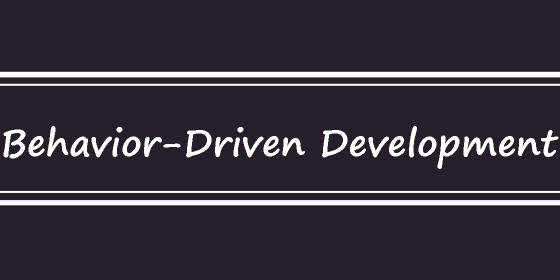Behavior-Driven Development (BDD)

Behavior-Driven Development (BDD) is a software development approach that extends Test-Driven Development (TDD) by emphasizing collaboration and communication between technical and non-technical team members. BDD focuses on defining and verifying the behavior of a software system from the perspective of its stakeholders.
Key points about Behavior-Driven Development (BDD) include:
- Ubiquitous Language: BDD promotes the use of a shared and domain-specific language that is understandable by both technical and non-technical stakeholders. This common language helps bridge the communication gap between developers, testers, product owners, and other stakeholders.
- Three-Amigos Collaboration: BDD encourages collaboration between three key roles: developers, testers, and product owners (or business analysts). Together, they discuss and define the desired behavior of the system in a way that can be translated into executable tests.
- User Stories as Behavior Specifications: BDD scenarios are often written in the form of user stories or Gherkin syntax, using “Given-When-Then” clauses. This allows stakeholders to express system behavior as concrete examples that can be easily understood.
- Automated Acceptance Tests: BDD scenarios are automated and serve as acceptance tests for the software. The tests are typically written using tools like Cucumber, SpecFlow, or Behat, which parse the Gherkin syntax and execute the steps against the system.
- Focus on Behavior: BDD shifts the focus from low-level technical details to the desired behavior of the software. It helps ensure that the system meets the requirements and expectations of stakeholders.
- Customer Collaboration: BDD encourages regular collaboration with customers and product owners to refine and prioritize behavior scenarios. This helps ensure that development efforts align with business goals.
- Continuous Verification of Behavior: BDD scenarios serve as living documentation and are continuously verified against the evolving software, providing feedback to the team whenever behavior deviates from the desired expectations.
- Regression Testing and Refactoring: BDD scenarios provide a safety net for refactoring and help prevent regressions as the software evolves.
Behavior-Driven Development is a powerful technique for aligning software development efforts with business objectives and improving the clarity and understanding of system behavior. It promotes a collaborative and customer-centric approach, leading to a shared understanding of requirements, better software quality, and more effective communication between technical and non-technical team members. By focusing on the “why” behind software development, BDD helps teams deliver value that truly meets customer needs.